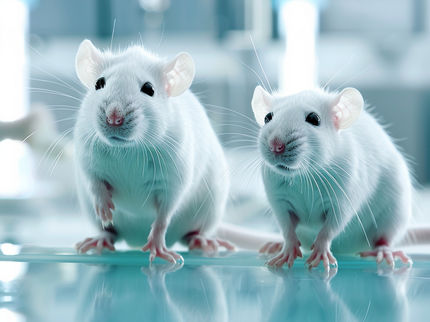BASF receives 2013 Animal Protection Research Prize
German Federal Ministry of Food, Agriculture and Consumer Protection honors research team for developing alternative methods
BASF has been awarded the “32ndResearch Prize for the promotion of methodological work aimed at reducing and replacing animal experimentation” in Berlin. The research team “Experimental Toxicology and Ecology” received this honor for their methodological work in developing and implementing “Strategies for testing the local toxicity of chemicals without animal experimentation.” The award is endowed with prize money of €15,000 and is sponsored by the German Federal Ministry of Food, Agriculture and Consumer Protection (BMELV).
BASF research scientists have developed completely animal testing-free methods and strategies that examine substances for skin sensitization, eye irritation and skin irritation. The predictive accuracies are at least as good as those provided by animal studies. “Not only did we develop these methods, we also validated them, which allows us to use them in our routine testing now,” said Dr. Robert Landsiedel, head of the Short-Term Toxicology Unit at BASF. Together with Dr. Susanne Kolle, head of the laboratory for applied alternative methods, and Dr. Caroline Bauch, who worked on the development of the methods as part of her doctoral thesis, Landsiedel received the prize on behalf of the entire Experimental Toxicology and Ecology team from the hands of Parliamentary Secretary of State at the German Federal Ministry of Food, Agriculture and Consumer Protection, Peter Bleser. “Research contributes greatly to restricting animal experimentation to a minimum. Our goal is to replace as many animal tests as possible by alternative methods,” Bleser explained.
Key reasons for the prize were research and development achievements in three areas:
- In order to test the skin sensitizing effect of substances, BASF toxicologists have developed a reliable testing strategy consisting of three alternative methods. This strategy predicts the allergic effect with an accuracy of 94%. By comparison: the so far legally required animal test displays an accuracy of 89%.
- Since 2010, a completely alternative method has been used to test skin irritation, which is recognized as an OECD test guideline. BASF is also contributing to further developing and validating this method.
- Possible severe eye irritations have also been tested by using an alternative method. With the Opacitometer, BASF has developed the world’s only test apparatus for this purpose, and provides it to other laboratories at cost price. A completely new feature is the testing of mild eye irritation by using alternative methods. For this purpose, BASF researchers are using cultured tissue models resembling the cornea of the human eye.
BASF’s Toxicology Department has been developing alternative methods for more than 20 years and uses them whenever possible and to the extent permitted by law in order to reduce the number of experimental animals used. Based on the latest research results BASF fully converted its laboratory for regulatory skin and eye testing according to non-animal research methods, in the fall of 2009. In total, about one third of all toxicological studies at BASF are already performed with the help of alternative methods. “Thanks to the new alternative methods and the improved predictive value of animal testing, we already have significantly reduced the number of animals used,” Landsiedel said.
Most read news
Other news from the department science

Get the chemical industry in your inbox
By submitting this form you agree that LUMITOS AG will send you the newsletter(s) selected above by email. Your data will not be passed on to third parties. Your data will be stored and processed in accordance with our data protection regulations. LUMITOS may contact you by email for the purpose of advertising or market and opinion surveys. You can revoke your consent at any time without giving reasons to LUMITOS AG, Ernst-Augustin-Str. 2, 12489 Berlin, Germany or by e-mail at revoke@lumitos.com with effect for the future. In addition, each email contains a link to unsubscribe from the corresponding newsletter.

























































